9 Effective Methods to Clear Clutter and Boost Home Comfort


People in the US are carrying more and more of their own things, and it costs them a lot. Recent numbers show that Americans spend billions each year on storage units. This is a huge sum just to keep stuff they don’t have space for in their homes or apartments.
As living areas get more crowded, many want to get back not only physical space but also peace of mind. The goal of making life simpler and less cluttered is more than a one-time clean-up of a messy closet or garage; it’s about carefully managing belongings.
The Cost of Clutter

It’s easy to see why the saying “out of sight, out of mind” is popular among those who rent self-storage units. These renters pay substantial fees for the luxury of keeping items they seldom use, fees that often go unnoticed in monthly budgets.
Nationally, these costs add up to $30 Billion each year, representing a significant financial commitment to storing stuff many forgot they own.
$30 Billion is a huge number. That comes to nearly $100 a year for every man, woman, and child in the United States just to store stuff.
Choosing the Right Decluttering Rule for Your Home
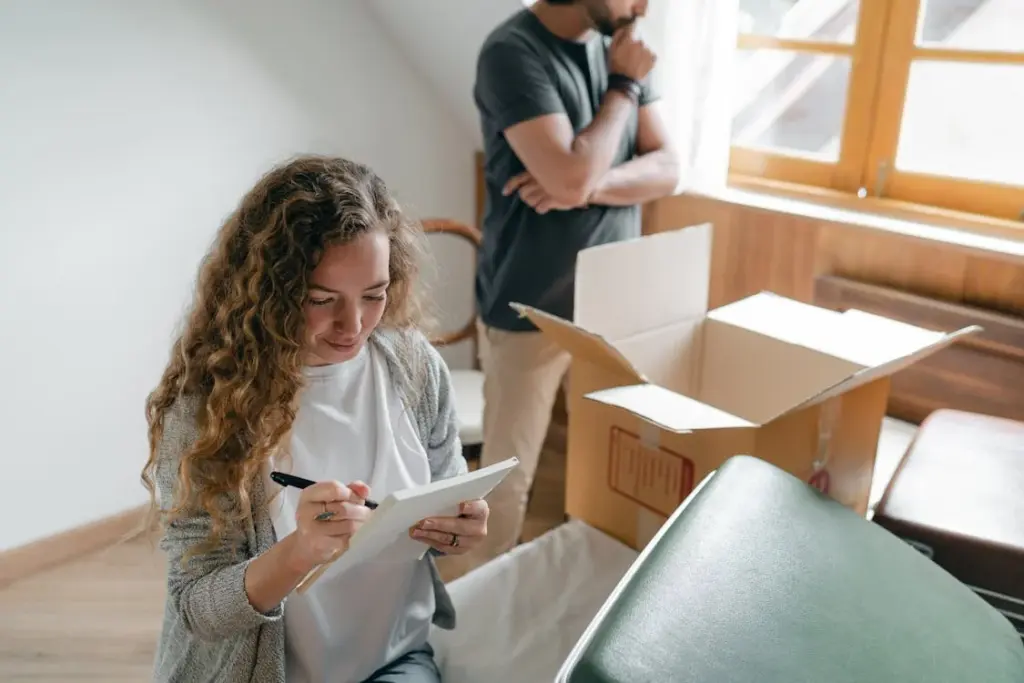
There are many ways and “rules” to declutter. The most important thing is to choose one that fits you. There is no single right or wrong way to declutter.
Here are nine different ways to declutter. They all work. You just need to find the one that suits you best.
The One-Year Rule To Decluttering

To combat the amount of clutter in our home, I developed the One Year Rule. The One Year Rule is if an item hasn’t been touched in a year, it is sold, donated, or discarded.
Implementing the One-Year Rule can dramatically change one’s living space and mindset. By regularly reviewing your possessions and asking whether or not they’ve been of any use or joy in the past year, you can make more intentional decisions about what to keep.
This approach clears physical space and alleviates the psychological burden of maintaining and storing unnecessary items.
What is the 12 12 12 rule for decluttering?

The rules are easy: find 12 things to throw away, 12 to give away, and 12 to put back in their right place. This way of sorting things turns a big job into small steps, so it feels less hard.
With the 12-12-12 plan, you can quickly decide what to keep, what to share, and what to remove, all in one clear session. It’s a fast and strong way to bring order back to your space.
What is the 90 90 rule decluttering?

Have you used that item in the last 90 days? If you haven’t, will you use it in the next 90? If not, then it’s okay to let go. This approach focuses on immediate relevance, helping to eliminate unnecessary items by evaluating their current utility.
It’s a more aggressive strategy that prioritizes the present moment over sentimental attachment, encouraging faster decision-making for a clutter-free home.
What is the 5 year rule for decluttering?

The five-year decluttering rule says if you haven’t used something in five years, you likely don’t need to keep it in your home. This rule is made for people who find it hard to get rid of old things but want a clear way to decide what to keep.
It gives plenty of time to think, which is helpful for bigger or special items that build up over time.
What is the 333 method of decluttering?

Choose 33 items (or less) including clothes, shoes, jewelry, and accessories. Pack up and hide everything else, and then you don’t have to think about shopping or what to wear for the next three months.
By limiting wardrobe choices, this method encourages simplicity and creativity while reducing decision fatigue. It promotes a minimalist lifestyle, helping to streamline both your space and your daily routine.
What is the 80 20 rule for clutter?

You can use the 80/20 rule at home by spending some time between big cleaning days to tidy up 20 percent of your things more often.
This helps keep your home looking neat and makes deep cleaning the other 80 percent feel easier and less scary.
What is the one touch rule for clutter?

The One Touch Rule for managing clutter is a simple yet effective principle designed to help keep spaces organized and reduce the buildup of clutter.
The core idea is that when you handle an item, be it your shoes, mail, or a coffee mug, you deal with it immediately in one action, placing it in its designated spot, rather than setting it down somewhere temporarily and having to move it again later.
This rule encourages immediate decision-making and action, such as putting things away right after use, opening and filing mail as soon as it’s received, or washing dishes immediately after eating.
The One Touch Rule helps in preventing clutter from accumulating by ensuring items do not pile up through procrastination or indecision.
What is the quiet decluttering technique?

The “quieting” decluttering method is a careful way to tidy and simplify your home or workspace. Unlike tough decluttering styles that need big cleanouts or strict sorting, quieting slowly improves and soothes your space.
This way is great for people who get stressed by big decluttering jobs or want a softer, thoughtful way to organize. It focuses on the process of making a peaceful place, letting you go slow and enjoy the work.
What is the golden rule of decluttering?

The main idea of decluttering is often said as “Keep only what makes you happy or has a use.” This idea asks people to look at their things based on feelings and use, making the space both useful and pleasant.
It means if something doesn’t help you or bring you joy, it’s likely time to get rid of it. This way creates a place with things that matter to you, cutting down on mess and improving how you feel.
This idea comes from Marie Kondo’s KonMari method and has become very popular because it is easy and works well to change messy places into calm, neat rooms.
An Observation About Decluttering

One thing that really stands out to me about all the different rules to decluttering is that they are all saying the same thing. “If you don’t use it, lose it”.
The only real difference is the timing.
How to Start Decluttering

Decluttering may seem hard at first, but breaking it into steps makes it easier. Having a clear plan helps you handle the process carefully, lowering stress and getting better results.
The trick is to do decluttering little by little, so you don’t get tired and can choose carefully what to keep and what to remove. Use these steps to make your decluttering easier and more satisfying.
Take Inventory

Begin by assessing what you have. It might be overwhelming, but understanding the extent of your possessions is the first step. This helps you get a clear picture of what you’re dealing with and highlights the areas that need the most attention.
By acknowledging how much stuff has accumulated, you’re already one step closer to creating a cleaner, more organized space.
Apply the One-Year Rule (or any of the rules listed below)

Ask yourself if you really need each item. If you haven’t used it in the past year, think about getting rid of it. This method helps you decide if the item is still useful or just taking up space.
Using a clear rule, like the One-Year Rule, keeps the process simple and makes sure things you don’t need are cleared out, giving you more space and a calmer home.
Categorize
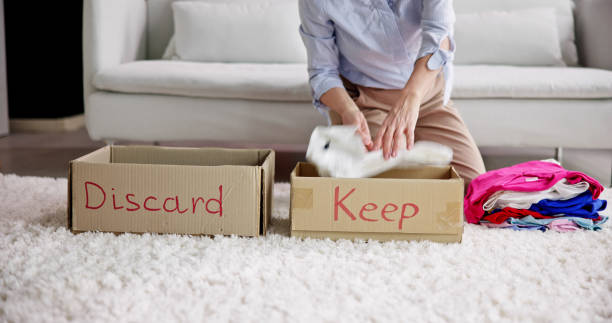
Divide your items into categories, keep, sell, donate, or throw away. This step adds structure to your decluttering efforts, making it easier to sort through large quantities of things.
By giving each item a clear destination, you’re simplifying the decision-making process, avoiding unnecessary hesitation, and ensuring that clutter doesn’t return to your space. Plus, categorizing helps to see what can benefit others through donation or sale.
Act Immediately

Once you choose to sell or give away an item, act on it quickly. The more time it stays in your home, the more you might change your mind. Doing it fast helps stop clutter from coming back and keeps you moving forward in the decluttering process.
It also brings the fun and good feeling of a cleaner space because you see the results right away.
Avoid Recluttering

Once you’ve made space, resist the urge to fill it with more things. Appreciate the open, tranquil areas you’ve created. Decluttering is not just about removing excess items but about adopting a new mindset toward consumption.
By valuing the spaciousness you’ve gained, you’re less likely to impulse-buy or hoard things in the future, ensuring long-term success in maintaining an organized home.
Practical Tips for Effective Decluttering

Decluttering is easier when you have a simple plan to follow. These tips help make decluttering less stressful, guiding you to clean your home one step at a time. They also help you think carefully about what to keep, making sure the results last and feel good.
Set Small, Achievable Goals

Instead of tackling the entire house in one day, focus on one area or room at a time. Completing smaller tasks can provide a sense of accomplishment and motivate you to continue.
This approach helps prevent burnout and makes the process feel more manageable, allowing you to maintain progress over time. By breaking your home into zones, you can address clutter systematically without feeling overwhelmed by the scope of the task.
Use the Four-Box Method

For each decluttering session, have four boxes or bins labeled Keep, Donate, Sell, and Trash. This helps you see the process clearly and makes choosing easier.
Sorting items into clear groups reduces confusion about where things belong and creates a smooth process. The Four-Box Method helps you stay focused, making sure every item has a place and nothing stays without a good reason.
Implement the 20/20 Rule
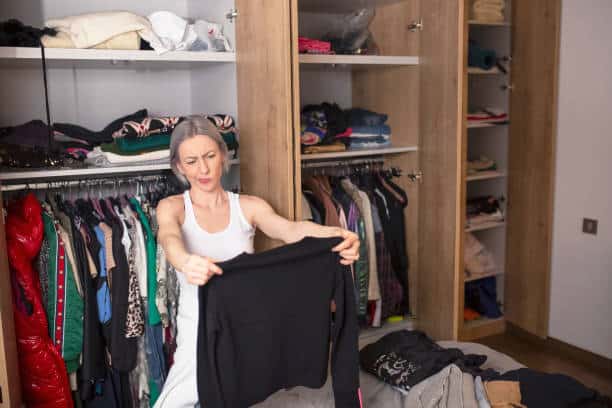
If you’re hesitant to get rid of something because you might need it, ask yourself if it can be replaced for less than $20 in less than 20 minutes. If so, it’s okay to let it go.
This rule helps you overcome the fear of scarcity and reinforces the idea that most things are easily replaceable. By using this practical mindset, you’re more likely to let go of items that are cluttering your space, confident that you can get them again if absolutely necessary.
Digitize Where Possible
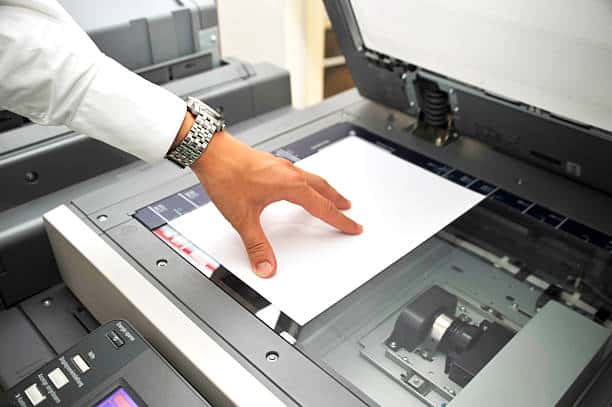
Cut down on physical mess by scanning papers, photos, and other items you want to keep but don’t need to hold as hard copies. This saves space and helps you find things faster.
Storing things digitally lets you keep memories and important details without taking up much room. Using technology, you can sort your digital files and enjoy a tidy, clear space.
Organize as You Go

Instead of merely decluttering, take the opportunity to organize the items you decide to keep. Invest in storage solutions that will help maintain order and prevent future clutter.
By arranging your belongings thoughtfully, you’re creating systems that make it easier to keep things tidy in the long run. Be it shelves, containers, or labels, organization supports a clutter-free lifestyle and ensures that your efforts have a lasting impact.
Involve the Whole Family
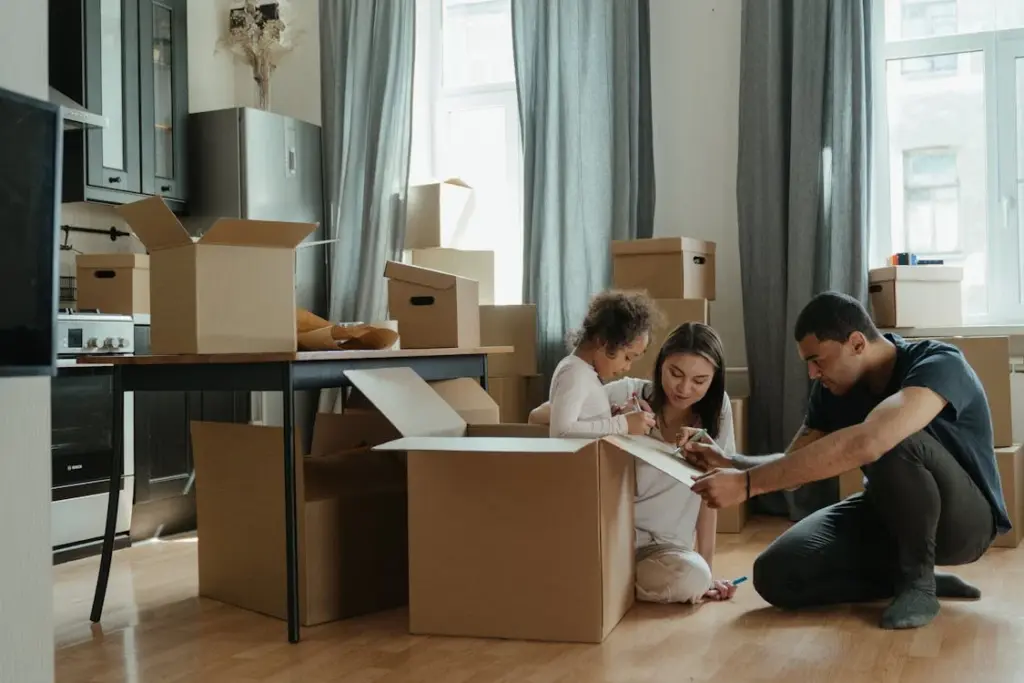
Decluttering should be a team effort, especially in places where people live together. Turn decluttering into a family task where everyone helps and choices about shared items are made as a group.
This not only spreads out the work but also helps teach important lessons about being responsible and staying organized. When all members join in, it creates a feeling that everyone owns the home’s tidiness, making sure the whole family cares about keeping the space neat.
Decluttering Is Hard

Decluttering is not easy. I get rid of things that I thought I cared about, but I am pretty loyal to the One-Year Rule. If I haven’t touched something in a year, I get rid of it.
This means things like trophies are at risk. I make a few exceptions. Pictures on walls are safe. Books and paperwork can be tricky. My spouse’s items are safe.
It’s hard to let go of things that have sentimental value. Focus on decluttering all the things around your house that do not have sentimental value. You haven’t touched that shirt in a year, do you need it? No.
Benefits Beyond the Physical

The effect of decluttering goes much deeper than just making a place look cleaner. It creates a space that helps improve clear thinking, focus, and productivity. When you remove physical mess, it lowers mental overload caused by too many things around, making it easier to concentrate.
This can make you feel better and less stressed because cleaning up can be very calming and gives you a feeling of control over your surroundings. Also, decluttering can help your money situation by finding items you no longer need that can be sold or given away, helping others who might need them.
Decluttering changes not only your space but also your mind and way of living.
Final Thought

In modern life, it’s easy to accumulate things that we think we need. However, by decluttering, we can keep our homes and minds free of clutter.
Next time you open that overflowing storage unit or closet, ask yourself if it’s really worth holding onto items you haven’t touched in over a year. The answer might just set you free.
 If you like what you just read, then subscribe to my newsletter.
If you like what you just read, then subscribe to my newsletter.



